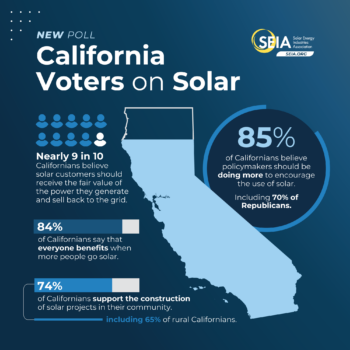How Community Solar Supports Rural Communities and Farmers

There are nearly 2 gigawatts of community solar installed across the United States, supporting our rural communities by generating local revenue and helping states make progress toward their clean energy and climate goals.
There are nearly 2 gigawatts of community solar installed across the United States, supporting our rural communities by generating local revenue and helping states make progress toward their clean energy and climate goals.
These projects are authorized in 19 states and the District of Columbia and allow residents, farmers, small businesses, and municipalities to receive credit on their electricity bills for the power produced from their section of a solar array, lowering overall electricity costs. A new paper released by SEIA details the various project models and arrangements farmers make to build or host community solar projects, and offers resources to help landowners and solar firms navigate this growing market.
Why Community Solar?
Community solar generally occupies leased land and is easier to return to its original state than many other forms of development.
Community solar enables equal access to the economic and environmental benefits of solar energy regardless of the physical attributes or ownership status of an individual’s home or business. In other words, if you can’t install solar directly on your property, community solar is a great option for accessing the savings and other benefits solar provides.
How it Works
As popularity for community solar grows, agreements between landowners and community solar developers are becoming more common.
While there are a variety of arrangements farmers use, generally, agricultural operations will lease a portion of their property for solar development for the life of the project, up to 30 years. If the solar project comes to fruition, the solar company pays the landowner for use of the property on which the solar array is located. Farmers will also often become a subscriber to the solar project, receiving an additional benefit in the form of savings in their electric bill, which can range in value.
These partnerships provide clean, renewable energy to rural communities and an additional source of income for farmers, which can be an economic lifeline for family operations. These projects can also”¯help states and towns hit their clean energy and climate goals without disrupting agricultural production. And in some cases, these projects can provide environmental co-benefits by using sheep to maintain vegetation on project sites and by creating habitat for pollinators.
But don’t just take our word for it. National Farmers Union president, Roger Johnson, says of community solar: “It plays an important role in climate change mitigation by cutting greenhouse gas emissions and can also provide an important revenue stream for farmers in the form of land lease payments. We applaud SEIA’s work on this issue and hope that their findings will encourage greater investments in community solar projects in the future.”
Making the Case
The report highlights five case studies across the country, from a project supplying clean power to a Minnesota school district and elderly care facility, to a Vermont dairy farm leasing land for a solar project to balance its income from fluctuating milk prices.
The case studies explore new models for farmers and local governments to consider. For example, the community solar installation on Allard Farm in Hadley Massachusetts benefits neighboring local governments and subscribers. The farm not only provides electricity cost savings to those who are subscribed to the farm, but to all local residents by lowering local taxes.
Every one of the projects highlighted are unique in their electric generating capacity, energy off-taker, financing model or geographic location, but all are providing immense value to farmers, their communities and local economies.
Read the report, share it on social media, and talk to your state and local leaders about authorizing community solar development in your neck of the woods.
David Gahl is senior director of state affairs, northeast for the Solar Energy Industries Association, the national trade association for the U.S. solar energy industry.


